YBK Publishers selects the books it publishes based on solid scholarship.
For manuscript consideration please follow this link.
If you would like to learn more about YBK Publishers, please click here
To read about YBK author experiences, click here
To return to our Catalog of Published and Soon to be Published Titles, please click here
Academic Texts and Journals Category
Available Now
Reality in the Shadows
or What the Heck's the Higgs?
by S. James Gates Jr. (recipient of the 2013 National Science Medal), Frank Blitzer, and Stephen Jacob Sekula
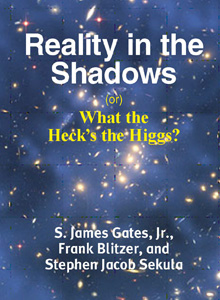
You will have to read the book to understand why the authors chose to end Reality in the Shadows or What the Heck's the Higgs with the following paragraph:
Until positive proof arising from direct observation and experiment occurs, superstring/M-Theory, braneworld scenarios, and whatever other ideas will emerge from the fertile imaginations of theorists, these ideas must continue each to be borne into a shadow of reality. Each is an enigma to be resolved in the expectation that we are bringing them a light-step forward, rather than casting them into new darkness in the cosmos. Observation is the true test of hypothesis. When observation yields direct evidence, we will have met the challenge of bringing reality out of the shadows.
Click here to view selected pages from this book
Reality in the Shadows or What the Heck's the Higgs describes how humanity came to learn the workings of the universe as groundwork for the science that found the Higgs particle just as it now seeks the graviton and other unseen particles that promise to unveil a great deal more about what we still don't know. Throughout the book are descriptions of important developments in theoretical physics that lead the reader to a step-by-step understanding of them.
Scientists have noted billions of other stars like our sun, and tens of thousands of other galaxies, nebulae, and still more undiscovered matter—black holes, pulsars, neutron stars, dark energy, the graviton, and much more. You will learn how we think they work and what lies beyond their discovery.
Work over the past forty years has created string theory and quantum mechanics, new approaches to understanding the universe in a way we now know can unify the quantum world with Einstein's perception of the world. It explores questions about the big bang that do not quite mesh with present theories, how gravity works, and how to unify gravity with quantum mechanics. It tells us why studies have moved to string theory, superstring theory, and M-theory and how they are used to find the answers.
These revealing additions to our knowledge have caused scientists and the clergy to reconsider many previous conclusions about what the universe is and how it works. In the twenty-first century, ideas and theories once regarded as scientific truth have come under increasing scrutiny and challenge. This book explores those concepts, presenting them in a manner the non-scientist can readily follow.
S. James Gates Jr.'s (Jim Gates) interest in science began at age four when his mother, Charlie, brought her children to a science fiction movie when the family was living at Ft. Pepperell near St. John’s, Newfoundland. Four years later at Ft. Bliss, near El Paso, Texas, Sylvester James Gates, Sr., his father—a member of the U.S. Army and a veteran of WWII—gave him books about the coming of the space age that solidified an early interest in science (and kindled his wish to become an astronaut). Science fiction, comic book superheroes, a fantastic high school physics teacher, Mr. Freeman Coney, and the Orlando Public Library served as the launch pad for a life in physics.
Gates became the Ford Foundation Professor, Physics and Affiliate Professor of Mathematics at Brown University in Providence, Rhode Island after retiring in 2017 as a University System Regents Professor; Center for String and Particle Theory Director; Distinguished University Professor; John S. Toll Professor of Physics; and Affiliate Professor of Mathematics at the University of Maryland — College Park.
He received the 2011 National Medal of Science, the 2006 Public Understanding of Science & Technology Award from the American Association for the Advancement of Science, the 2003 Klopsteg Award for excellent physics teaching from the American Association of Physics Teachers, and the 1994 Bouchet Award of the American Physical Society. He is a member of the National Academy of Science, the American Association for the Advancement of Science, the American Academy of Arts and Sciences, the American Physical Society, and the American Philosophical Society.
Gates has contributed to the mathematical foundation of supersymmetry since authoring M.I.T.'s first Ph.D. written on the subject in 1977. Among his discoveries has been four dimensional string theory using the mathematics of the standard model and connections to graph theory, information theory, and indications of the possibility that following the big bang there might have been an "inchoate epoch" during which processes similar to evolution acted on the mathematical laws that describe our universe. His research continues to expand the understanding of supersymmetry in unique and innovative ways.
In 2017, he completed forty-five consecutive years as a college instructor in physics and/or mathematics. He has appeared in many TV science documentaries, on-line videos, and in 2006 completed Superstring Theory: The DNA of Reality, a video series of twenty-four half-hour non-technical presentations.
Frank Blitzer received his B.S.E.E from Purdue University with a second major in mathematics. After graduating, he continued his studies toward the Master’s Degree in Electrical Engineering. Frank spent fifty years working for several major companies in the aerospace industry on such things as the design of the B-52 bomber and various missiles and space systems. He facilitated operations with inertial guidance, communications, and surveillance systems. He contributed to the design of systems for the Lacrosse Missile, Patriot Missile, the APOLLO Manned-Space Program, and the Strategic Defense Initiative Program. He developed and patented several missile guidance and control systems, and space systems, as well as pattern recognition and surveillance systems, in which fields he is published. He received the Honeywell Top Performer Award in 1992.
Stephen Jacob Sekula's parents, Annetta and Stephen, fed Steve's early science habits with dangerous chemistry sets, providing his writing interest with endless pads of paper, typewriters, and, eventually, word processing software, as well as intellectual criticism of that writing. His sister, Kate, was essential in dragging him back to reality when he spent too much time in the same shadows this book explores.
SJS is Associate Professor of Experimental Particle Physics at Southern Methodist University in Dallas, Texas. He earned his Ph.D. from the University of Wisconsin–Madison and his B.S. from Yale University.
He has been involved in particle collider experiments since his undergraduate days; first at Fermilab, then at SLAC National Accelerator Laboratory, and presently at CERN. He led a team within the BaBar collaboration in 2008 that discovered a state of matter, the lowest energy configuration of bottom quark and its antimatter counterpart, that was first predicted to exist in 1977. He participated in the discovery and measurement of the Higgs Boson in 2012 and 2013, culminating in the announcement of its discovery on the Fourth of July in 2012. He continues still to be fascinated by the potential of this particle to explain even more about the presently unknown origins of our universe.
He is a recipient of the 2017 SMU Altshuler Distinguished Teaching Professor Award and he received the Texas Section American Physical Society's Robert S. Hyer Award for excellence in the supervision of undergraduate research.
Certain Extensor Structures in the Calculus of Variations
by William Clifton Bean

Professor H. V. Craig (1900–1981), a firm believer in the power of invariant methods in mathematical physics, introduced extensors in 1937 as "tensors relative to the extended point transformation." Both Craig and A. Kawaguchi, another giant in the field of differential geometry, began to develop extensor theory in their independent research. Their leadership inspired many others to work on generalizations, derivations, and physical applications of extensors.
Certain Extensor Structures in the Calculus of Variations is a compilation of independent, unpublished research originally created as a doctoral dissertation by William Clifton Bean under the supervision of H. V. Craig. It is provided as a building block to stimulate further research in the application of extensors to mathematical physics and differential geometry. The serious student of tensor analysis will find great value in Chapter One’s thorough introduction to extensors and related topics. This is especially true given the paucity of sources in print that collect this information in one place.
William Clifton Bean is a retired senior engineer, NASA—Houston; an instructor of mathematics at the University Of Houston—Clear Lake; and a fifty-year member of the Tensor Society, an international organization devoted to research in vector and tensor analysis, mathematical science, and information science. Bean worked in applied variational methods, trajectory optimization, lunar gravity models, pattern recognition, and navigation while at NASA—Houston. His current research interests include the automation of deep causal reasoning, backward causation, and the possible mediation of backward causation in quantum physics.
A Singer's Manual of Foreign Language Dictions
Sixth Edition, Updated 2012
by Richard F. Sheil, Ph.D.
Chapter entitled Russian Diction by Christine Walters McMasters, M.M.

Professor Richard Sheil lays out the fundamentals for singing accurately and clearly in the crucial languages for singers: Roman Church Latin, French, German, Hebrew, Italian, Spanish, and Russian.
Emeritus professor of music in the State University of New York, Richard F. Sheil guides students, singers and anyone who wishes to sing properly in a foreign language through an education of the highest degree. His writing is clear and lively. His comprehensive text will be an indispensable tool for every singer from established professionals to voice majors to those who want to sing in church on Sunday morning. A lesson from Professor Sheil will revitalize your expression of all these languages.
Click here to read a sample from this book (NOTE: You must have Adobe Acrobat Reader to view the sample pages).
Click here to view the Table of Contents.
Landscape Painting Comes to America
A World Journey from Classic through Plein Air—Apelles through Inness
by Katherine L. Lewis

Inspired by the tranquil view waiting to be transferred to canvas in Constable's English countryside, a new curiosity disturbed the painter's concentration. How did America, escaping her burdened beginnings, come to adapt Europe's artistic superiority to her own first great school of landscape painting?
Landscape Painting Comes to America, written by a painter, details the development of landscape painting from blank canvas to exhibition, documenting its long struggle to become a genre unto itself while relating that development to its historic migration across an ocean.
Click here to view the table of contents and selected pages from this bookAssessment of Giftedness
A Concise and Practical Guide (Third Edition)
by Julie Lamb Milligan
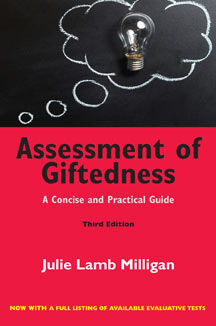
What tests are used to identify giftedness?
After a battery of tests has been administered to a TAG (talented and gifted) individual, how are the decisions made about their placement and the services they will receive?
Beyond standardized testing, how else can students qualify for services?
This is a guide for parents, teachers, and university students seeking to identify and/or work with the gifted. It conveys:
- A how-was-it-done history of assessing and identifying giftedness.
- Traditional and non-traditional measures for identifying the gifted.
- Procedures and test instruments used for appropriate and accurate assessment.
- Guidance for identifying giftedness among subpopulations.
- Methods for recognizing giftedness in the primary grades.
- The importance of interacting with classroom teachers in the assessment process.
It also provides:
- A full listing of evaluative tests by name, descriptive information on their scope and purpose, applicable age ranges, and the publisher from whom they can be obtained.
- Many practical classroom ideas and activities for nurturing potential giftedness.
- An Activity Book providing templates outlining daily activities to use with students that are keyed to each chapter.
About the author:
Julie Lamb Milligan is Director of Gifted Education at Arkansas State University, having a Ph.D. in Gifted Education with an emphasis in Curriculum and Instruction from Kent State University. She has published numerous professional articles concerning the education of the gifted that have appeared in journals and teacher-education publications throughout the country. Augmenting this, she has a background of almost twenty years of in-classroom teaching and administration.
The Hate That Cures
The Psychological Reversibility of Schizophrenia
by Evelyn Liegner
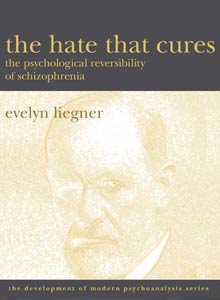
The Hate that Cures by Evelyn Liegner, the second book in the series, The Development of Modern Psychoanalysis, gives a moment-by-moment account of the reversal of psychosis using Modern Psychoanalytic techniques. Detailed notes from sessions are used to illuminate how the patient is healed by the emotional communication of hatred within the transference and countertransference. Liegner shows how Modern Psychoanalytic interventions facilitate the ability of the ego to handle a broad range of feelings and impulses.
The techniques and theory of Modern Psychoanalysis was first introduced to the wider professional community by Hyman Spotnitz in 1961–62 in a series of postgraduate lectures given by Dr. Spotnitz at the Stuyvesant Polyclinic in New York City. Modern Psychoanalysis takes its point of departure from the problems left unresolved by Freud and his original associates.
Wittgenstein's Folly
by Francoise Davoine; translated by William J. Hurst
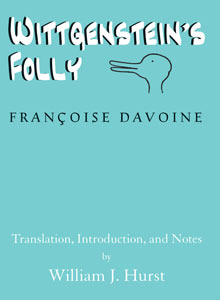
Wittgenstein's Folly is a translation of Françoise Davoine's La Folie Wittgenstein.
"Folly" has many meanings, referring to the "madness" of the fool, as well as to the madness of what we call the "mentally ill." "Folly" is linked with the fools of medieval plays, with the fools of Renaissance satires, and with the folly that speaks as a woman in Erasmus's Praise of Folly. In this book by Francoise Davoine, "folly" often refers to the madness of those isolated by historical catastrophes that have not been processed across generations, and which can only be studied by exploring the fields of madness, by finding ways to hear Folly herself speaking. The title does not refer specifically to the madness or folly of Wittgenstein himself. Wittgenstein's Folly is about psychoanalytic experience, and specifically about the madness or folly that comes to reside, in a way, in what Françoise Davoine refers to as a "psychotic transference."
Françoise Davoine is a psychoanalyst trained in the 1970s at Lacan's École freudienne de Paris. With advanced degrees in the Classics and in French Literature, she obtained a doctorate in sociology at the École des hautes études en sciences sociales (School for Advanced Studies in the Social Sciences), at the Centre d'étude des mouvements sociaux (Center for the Study of Social Movements), led by Alain Touraine. She and her husband, Jean-Max Gaudilliere, have led a weekly seminar (Madness and the Social Link) at that Center for over thirty years.
Françoise Davoine is convinced that psychosis is a field of research for both analyst and analysand, in which the events of History, or perhaps pieces of those events, which could not be processed by the individual or even by human beings as a group, can be identified, recognized, and finally put in a place where they can be fully experienced within a symbolic framework created by social links; i.e., with others, within a social world.
Modern Psychoanalysis of the Schizophrenic Patient:
Theory of the Technique
by Hyman Spotnitz, M.D., Med.Sc.D.
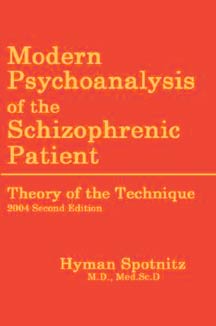
What Freud called the "stone wall" was first breached by this pioneering psychiatrist and psychoanalyst with this seminal work in 1969. This substantially revised and enlarged edition is the comprehensive and definitive handbook for practitioners of the talking cure of the disorders that arise before speech.
Click here to read a sample from this book (NOTE: You must have Adobe Acrobat Reader to view the sample pages).
Click here to view the subject index.
Modern Psychoanalysis
by Center for Modern Psychoanalytic Studies
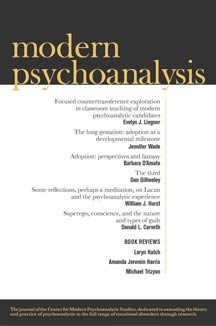
YBK Publishers is proud to be the publisher of the psychoanalytic journal, Modern Psychoanalysis.
In continuous publication since 1976, Modern Psychoanalysis, the journal of the Center for Modern Psychoanalytic Studies, is dedicated to extending the theory and practice of psychoanalysis to the full range of emotional disorders through research.
http://www.cmps.edu/
Subscribe now to Modern Psychoanalysis and save.
The Emergence of the Wonder Child
and Other Pages
by Arnold Bernstein
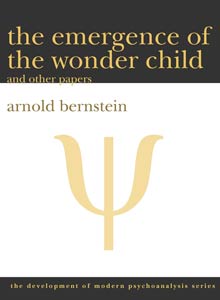
Modern Psychoanalysis takes its point of departure from the problems left unresolved by Freud and his original associates. Modern Psychoanalysis was first introduced to the wider professional community by Hyman Spotnitz in 1961-62 in a series of postgraduate lectures chaired by the author, given at the Stuyvesant Polyclinic in New York City.
The Emergence of the Wonder Child will interest all who are concerned to understand and advance Modern Psychoanalysis. It will have special appeal to practicing psychoanalysts seeking to master the science of therapy. While the treatment methods described here differ considerably from the orthodox treatment parameters, they follow along a natural continuum from classical psychoanalytic doctrine.
The Emergence of the Wonder Child is the inaugural volume in The Development of Modern Psychoanalysis series created by the Center for Modern Psychoanalysis in New York City.
The Early Jesus Movement and Its Gospels
Four Major Parties, Four Major Gospels
by Harry W. Eberts Jr. and Paul R. Eberts
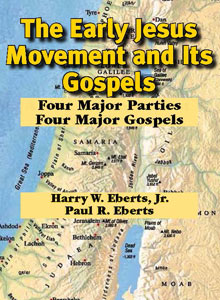
This book, third in the Eberts' Early Jesus series, breaks ground not covered in other books on the Gospels. First, it views Jesus' life and ministry in a socio-political/economic-religious context. It then presents a never-before-seen chronology of Jesus' ministry (across three chapters) and, something not usually done by other scholars, the Eberts have characterized each Gospel. They posit that Mark shows Jesus as the Healing, Suffering, and Trusting One; that Matthew shows Jesus as the Righteous and Just One; Luke shows Jesus as the Caringly Compassionate and Socially Just One; and John shows Jesus as One with the Living, Loving, and Active God.
The Early Jesus BlogClick here to view the table of contents and selected pages from this book
The Early Jesus Movement and Its Congregations
Their Cities, Conflicts, and Triumphs
by Harry W. Eberts Jr. and Paul R. Eberts
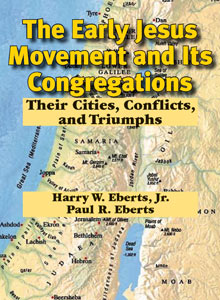
The Early Jesus Movement was initially centered in Jerusalem but soon produced four distinct parties—Disciples, Brethren, Hellenists, and Apostles—each ministering to different ethnic groups in Jerusalem and throughout the Roman Empire. Almost inadvertently, this diversity contributed to the movement's strength in speedily spreading through the Mediterranean world.
By going from one Jewish synagogue to another, built all over the Empire in response to earlier Jewish diasporas, by 60 CE at least one of the four parties established congregations in many of the Empire's cities, including its four largest, Rome, Corinth, Alexandria, and Ephesus. Although a patron-client-slave social structure dominated each city, the cities' histories and cultures also differed considerably, challenging Christian congregations with issues of social class antagonisms, gender, slavery, poverty, use of magic, paganism, and Roman rules against promulgating "foreign" religions and even forming associations. Due to their proximity with one another in these cities, the congregations also had to learn to deal with their ministries' differences.
Growing influence of Gentiles within the movement undoubtedly contributed both to controversies among the parties but also to their eventual resolution. The Apostle Paul's Letters (especially Galatians, Corinthians, and Romans) provide an insider's look at the controversies and their consequences on the movement. We see Stephen's blood spilled as Hebrew fought Hellenist. We watch Paul vilified, beaten, and even stoned for his ideas. We learn that in Rome during Nero's persecution of Christians (64 CE on), Christians informed on one another, just as Judas had done to Jesus. Such deep-seated controversies also divided the various parties. Yet a spirit (they called it the Spirit of Christ) kept influential Christians working with one another.
A chapter on each city offers details on how their congregations coped with the problems. In general, Disciples and Brethren parties responded by re-interpreting historically Jewish traditions. In contrast, Hellenists' and Apostles' re-interpretations blended Jesus' teachings with historically Greek traditions. We believe that to observe and understand these issues as they took place is an exciting venture. We invite you to join us in it.
The Early Jesus BlogClick here to view the table of contents and selected pages from this book
The Early Jesus Movement and Its Parties
A New Way to Look at the New Testament
by Harry W. Eberts Jr. and Paul R. Eberts
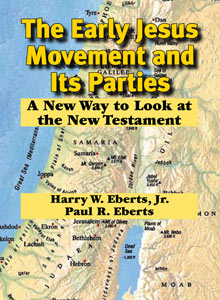
What have generations of New Testament scholars been hiding from us over all the ages?
Harry and Paul Eberts have produced a book that challenges readers to rethink how they approach the New Testament. Most scholars have presumed a reasonably unified movement among the Christian churches led by Peter, Paul, James, and Philip during the period immediately following Jesus' death and resurrection. This book suggests that at least four parties—one led by Peter and the other eleven disciples; one by James the brother of Jesus and as many as 500 "brethren;" one by Stephen, Philip, and Apollos who were Greek-speaking Jews having Alexandria as their base; and one by Paul and Barnabas (among other apostles) "who did not know Jesus in the flesh" vied with each other to portray Jesus as the Son of God.
Up to now, most scholars have presumed the Gospels to be at least somewhat "additive" in developing the character of Jesus. The Eberts' suggest that each Gospel represents the viewpoint of one of the four parties, thus presenting differing views of the meaning of Jesus' life, his death, and his resurrection. For a long time, scholars have presumed the "Jesus movement" was unified in its evangelizing, but the Eberts' posit that the four parties went among different ethnic groups initially, but came to compete for the same converts while undercutting each other, as they did in Ephesus and Corinth, in seeking to convert Jews and Gentiles to Christianity.
Scholars have believed that small differences in churches' governance and worship were "options" chosen by each congregation. But the Eberts' suggest that each party developed its own patterns of church governance, worship, and practices. There has been the regular presumption that St. Paul's letters were unified statements of his views of beliefs, behaviors, and practices in the early churches. The Eberts' instead suggest a shifting over time that is shown by his letters, in Paul's theology and ethics as the apostles struggled with the other Christian parties and with the Gentiles to convert nonbelievers to Christianity.
The book speaks directly to these and other controversies as it carefully documents directly from New Testament writings how, where, and why these four parties emerged to struggle with each other and thereby generate what are now considered the major sacred writings about that historical figure identified first as Jesus of Nazareth and later known as Jesus the Christ.
The Early Jesus BlogClick here to view sample pages from Chapter 1 of The Early Jesus Movement and Its Parties
Acculturation in the Navajo Eden:
New Mexico, 1550-1750
by Seymour H. Koenig and Harriet Koenig
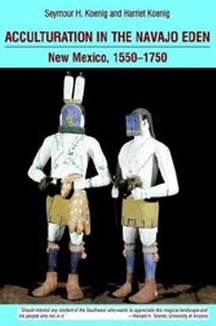
Based on years of field work and scholarly research, these independent students of the native American cultures of the southwest have produced both a lively report on contemporary religious and cultural practices, and a readable and engaging study of the history of both the Navajo and the neighboring, even more ancient Puebloans. Forming theories of poorly documented precontact cultural practices based on the forms that evolved during and after Spanish exploration, and that survive today, the Koenigs' "innovative and imaginative study" have developed "ideas that should stimulate much thought and new research," according to David Brugge. 136 illustrations, accompanied by extensive notes. Bibliography. Index.
Click here to read a sample from this book (NOTE: You must have Adobe Acrobat Reader to view the sample pages).
Click here to view the Table of Contents.
Tibetan Weddings in Ne'u na Village
by Tshe dbang rdo rje with Charles Kevin Stuart and Alexandru Anton-Luca

This second work in the ethnographic preservation of the traditions of Tibet follows the publication in 2008 of Life and Marriage in Skya rgya, a Tibetan Village.
The book has three distinct sections: a brief historical introduction to Ne'u na Village, a detailed, sequenced description of a generalized Ne'u na wedding accompanied by related songs and speeches, and three interlinked case studies breathing life into and bringing specificity to the description. As background information, the author discusses the ethnic composition of the village, which in addition to Amdo Tibetans comprises both Han Chinese and Hui Muslim families.
Through Tshe dbang rdo rje's minute observation, description of pre-marriage deals and the actual wedding ceremony, readers can almost see it happening before their very eyes. Also, the detailed description of the actual wedding party as well as the careful rendering of each song, opens a door to the marriage ceremony. Song texts are given in free English translation, in oral Tibetan, literary Tibetan, IPA and as word by word renditions in English.
The third section contains the case studies. While the matchmaker in chapter three is a busy, anonymous figure shuttling messages and gifts between the prospective groom and bride's families, the results of Bka' dbang sgrol ma's visit in chapter six to her younger sister sets off a chain of events that forever influence fundamental aspects of the family's life.
The result is a multidisciplinary documentation of the wedding practices in the Amdo Tibetan village of Ne'u na, located in the present-day Qinghai (Mtsho sngon) Province, on the historical frontier between China and Tibet.
Life and Marriage in Skya rgya:
A Tibetan Village
by Blo brtan rdo rje with Charles Kevin Stuart

Life and Marriage in Skya rgya: a Tibetan Village is an important achievement, delving deep into contemporary Tibetan society, enabling us to explore the crucial negotiations between tradition and modernity, both individually and collectively, that confront present-day Tibetan villagers.
The ethnographic discussion of songs, marriage practices, and narratives gives us direct insight into the lives, experiences and expectations of ordinary Tibetans, sharing the joys and pains, and the hopes and fears of these Tibetans, old and young. We observe how the dilemmas and celebrations that characterized an earlier era persist and evolve as the local society is propelled into twenty-first century China. Blo brtan rdo rje's honest rendering of the details of his family life make this a page-turning account of life in a rural Tibetan area that is vanishing.
* * *
"Skya rgya is a farming village in A mdo, the Tibetan name by which the northwest of the Tibetan Plateau is known. While Tibetans largely welcome the material benefits that have been brought to them by the march of modernity, it is also inevitable that many of their older traditions have come to be seen as outdated. By juxtaposing voices from earlier periods with those that reflect contemporary experiences, [the author] has provided us with a fascinating window onto the processes of change and development, as they are being experienced by Tibetans in this area.
This book provides a rich resource for all those interested in the history and culture of the region, . . . . [the author's narratives give] us a direct and vivid insight into the lives, experiences and expectations of members of his home community. By letting four of his informants speak to us directly he allows us to enter into the joys and pains, hopes and fears of these Tibetans, old and young. We have a rare chance to observe how the dilemmas and celebrations that characterized an early era have persisted or evolved as local society is propelled into the modern world of twenty-first century China."
—Fernanda Pirie
The Centre for Socio-Legal Studies
Oxford University
Blo brtan rdo rje's honest rendering of the details of his family life and his experiences conducting field research make this a page-turning account of life in a rural Tibetan area that is already vanishing. When Blo brtan rdo rje was young, there was not even a bridge to cross the Yellow River into Gcan tsha County; coracle boats were the principle mode of transport across the river. After bridges were built in the late 1980s, life has been changing rapidly.
This is not to suggest that no change had come to this Tibetan village before this time, as the arrival of the troops of the Muslim warlord, Ma Bufang, prior to the Communist period are also documented here. The forced conversion of neighboring (down-valley) Tibetans to Islam was a crucial vehicle for the later commercial changes introduced in the 1990s.
—Gray Tuttle
Department of East Asia Languages and Cultures
Columbia University
Click on the links below to view sample pages from the book:
Title and Table of Contents
Full Preface by Fernanda Pirie
The Arranged Marriage of Young Children
Introduction to the Village of Skya rgya
Talking Acadian
Communication, Work, and Culture
by John Chetro-Szivos
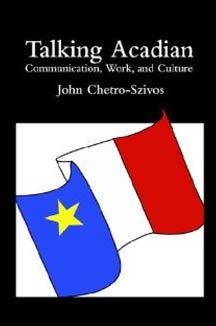
Talking Acadian: Communication, Work and Culture provides a look into the lives of the French-speaking American Acadians, and particularly those who left eastern Canada to settle in Massachusetts in the 1960s. This book captures their stories about family life and their values, morés and morals. It also traces the ways that they use communication to develop and maintain their culture.
What the reader learns is that to talk about Acadians you must talk about work. This group gives us new insights into the world of work — a central feature of living for the Acadians and crucial to their self-definition.
There are few sources about this culture and their experiences in the United States. This book makes contributions to communication studies, more specifically the Coordinated Management Meaning by analyzing the situated interactions of this community, demonstrating the capacity of communication to transmit the rules and grammar of a culture, and highlighting Cronen's consequentiality of communication.
John Chetro-Szivos is a communication scholar and chair of the Department of Communication at Fitchburg State College in Massachusetts. He received bachelor's and master's degrees from Assumption College, a master's from Anna Maria College, and his doctorate in communication from the University of Massachusetts, Amherst. He has published several works in the field of communication, specifically on the Coordinated Management of Meaning theory and American pragmatism. He is the Chair of the Department of Communication.
Click here to read a sample from this book (NOTE: You must have Adobe Acrobat Reader to view the sample pages).
How I Arrived At This Conclusion
A Philosophical Memoir
by Charles Renouvier; translated by Bernard J. Looks
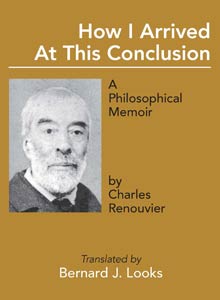
Charles Renouvier (1815–1903) is properly regarded as one of France's greatest philosophers of the nineteenth century and an important figure in the modern history of French politics and education.
Not only is this memoir, Comment je suis arrivé à cette conclusion, the first work by Renouvier to be translated into English, but as Renouvier claimed for it, the first published philosophical memoir, tracing the development of a philosopher's mature philosophical position.
In critically distinguishing his views from from those of the major philosophers including those of Immanuel Kant, he has written a most useful ancillary text for the study of modern western philosophy. More, both as a philosopher and a man, Renouvier influenced the work of the American psychologist and philosopher, William James, who regarded him as a mentor. Among others influenced by Renouvier was the French sociologist, Emile Durkheim, the American philosopher, Charles Sanders Pierce, the German philosopher, Karl Marx, the French philosopher, Octave Hamlin, the French poet and novelist, Victor Hugo, and the French novelist and critic, Julien Benda.
The most recent attempts to replace philosophical as well as religious explanations of the origins and existence of the universe with purely scientific ones should heighten the interest in Renouvier's memoir. For, while he attempts a purely scientific explanation, he arrives at startlingly different conclusions.
Bernard J. Looks holds a Ph.D. in modern European History from Columbia University. He has published Triumph Through Adversity, a memoir of the life and work of Martin S. Dworkin, a book of Dworkin's poetry, entitled, Unfinished Ruins, and articles on education and film criticism.
Click to view some sample pages from the book (Title page, Introduction, Index)Religion
What It Has Been nd What It Is
by Jay G. Williams

What It Has Been
Beginning with a review of the human needs that all religions seek to fulfill, Dr. Williams traces the world's religions as they evolved through four cultural channels: China , India and South Asia , the Near East, and Europe. The histories of all the great religious traditions—Confucianism, the Greek and Roman pantheons, Judaism and Christianity, Hinduism, Buddhism, Jainism, Taoism, Islam—evolved through the four great world cultures and often followed empires as they conquered and expanded.
What It Is
The various religious traditions are followed down all four cultural streams to contemporary time—through their confrontations with the Enlightenment, Nietszche (""God is dead!"), Freud, and perhaps most profoundly with Darwin. The fundamentalist and moderate threads of both the Islamic and the Judaeo-Christian fabrics are thoughtfully examined.
About the author
Jay G. Williams is chair of the department of religious studies and director of Asian studies of Hamilton College. He is the author of books and monographs and of many articles in comparative religion.
Click on the links below to view sample pages from the book:
Title and Table of Contents
The Near East - Sumer, Egypt, Assyria, and Babylonia
Early Chinese Buddhism
The Modern Near East and Europe
Index
The Depository Trust Company
by William T. Dentzer Jr.
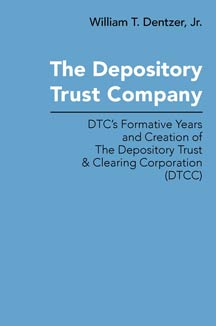
The Depository Trust Company reports the early 1970s origin and evolution of The Depository Trust Company (DTC), the world's largest securities depository, and how it became the basis of The Depository Trust & Clearing Corporation (DTCC) in 1999. It describes the basic policies and company culture of DTC and DTCC and shows how these organizations made the clearance and settlement of virtually all trades in U.S. equity, corporate debt, and municipal securities more accurate and less costly, obliterating through automation the conditions that created the Wall Street "paperwork crisis" of the late 1960s.
The Jottings of David Daube
Edited by Calum Carmichael
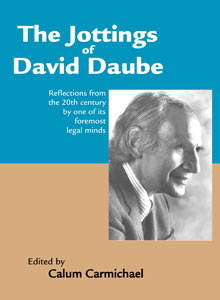
David Daube's life spanned almost the entire 20th century and he was witness to itshistory. Born a Jew in Germany in 1909, he spent World War II and its aftermath in Britain on the faculties of Cambridge, Aberdeen, and Oxford. He came to the United States in the '60s—to the University of California at Berkeley where he reveled in what he called the "unmanicured, unclubbable, countercultural attitudes." Through it all he never lost his love for the land of his birth—though it didn't love him back for many years: he was on Hitler's list of those to be put to death once Germany had conquered England.
One of the great legal minds of our time, Daube's depth of scholarship in a range of subjects—ancient literature, English literature, ancient law, medical ethics, much more—was matched by a dazzling agility and originality of mind—for instance: though raised in an Orthodox Jewish home, he produced strikingly original work on the New Testament.
Not your typical fusty professor, he was a brilliant and charming commentator onmatters personal, political, social, and philosophical. The reader of these jottings (set down in the 1970s and '80s) will understand within a page or two why those who knew him treasured him as a friend, mentor, and intellectual provocateur. These private reflections, gathered by one of his most distinguished students, are charming, insightful, thought-provoking, sometimes profound, and sometimes just amusing. His commentaries on political and social issues of his time ranged from bravely original thought on Israel and the Palestinians to an amusing and enlightening review of thesensational porn film Deep Throat.
Here are some sample jottings:
"I love women. They provide the unhappiness that I need in life."
"People are more struck by the asininity of the law when they are trapped by it thanwhen they are let off."
"We are all of us survivors all the time; everything that is, is a survivor relative to what has fallen by the wayside. Naturally, having escaped from Hitler's clutches myself, I am a bit more alive to the whole business than the average guy."
Taoist Healing Gestures
by Emma I. Gonikman
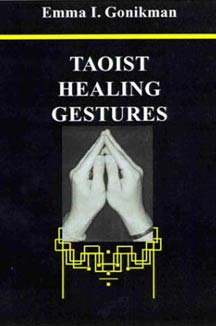
Taoist Healing Gestures is a blend of simple practices with explanations of more complex nontraditional healing methods. The Mudras (patterns of finger placement) illustrated in this book require no knowledge at all of alternative medicine while fostering immediate self-healing. Using the experience of ancient Tao and the masters of Qi Gong, there is special focus on Chinese medical traditions throughout the book.
Emma I. Gonikman, M.D., of Minsk, Belarus, is highly qualified to prepare this work as she was educated at the Medical School at Leningrad, Russia and is now President and Scientific Director of the Center for Natural Medicine, Santana, in Minsk. She is the Chief Consultant on Nontraditional Medicine of the Ministry of Public Health for all of Belarus as well as being the Scientific Director of the Polish Association of Doctors of Alternative Medicine.
Dr. Gonikman has published sixteen other books, some of them, like this one, best-sellers. They are currently available only in Russian.
Click here to read a sample from this book (NOTE: You must have Adobe Acrobat Reader to view the sample pages).
Click here to view the Table of Contents.


